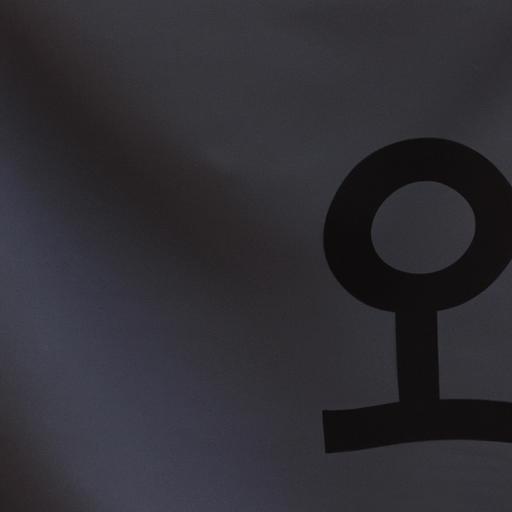Introduction

Emojis have become the language of the digital era, adding a touch of emotion and nuance to our online conversations. As we dive into the realm of symbols, one particular emoji has caught our attention – the black flag emojIts simplicity and enigmatic nature make it a subject of curiosity for many. In this article, we will unravel the meaning behind the black flag emoji, exploring its significance in various contexts.
Emojis have revolutionized the way we communicate, acting as visual cues that convey emotions and ideas. From expressing joy with a smiling face to conveying sadness with a teardrop, emojis have become an integral part of our online conversations. The black flag emoji, in particular, stands out amidst the vibrant palette of emojis, piquing our curiosity about its significance.
When we encounter the black flag emoji, questions arise. What does it represent? Why is it used? The black flag emoji holds a multitude of meanings, depending on the context in which it is used. It has transcended its digital origins and found resonance in a variety of scenarios, both online and offline.
The black flag emoji carries a sense of rebellion, protest, and solidarity. It has become a symbol of defiance against oppressive systems, a rallying cry for change. Its origins can be traced back to historical movements, where black flags were raised to signify resistance. Today, this symbolic gesture has found its way into our digital conversations, allowing us to express our stance on various issues.
In the following sections, we will delve deeper into the history, symbolism, usage, and controversies surrounding the black flag emojJoin me on this journey as we unlock the hidden meaning behind this intriguing symbol. Together, we will explore its diverse interpretations, shedding light on the captivating world of emojis.
Stay tuned for the next section, where we will uncover the fascinating history and origin of the black flag emojAre you ready to embark on this adventure? Let’s dive in!
History and Origin of the Black Flag Emoji

The Evolution of Emojis and the Introduction of the Black Flag Emoji
In the vast landscape of emojis, the black flag emoji emerged as a symbol with a rich history and deep-rooted meaning. To understand its significance, we must first explore the evolution of emojis. From their humble beginnings as emoticons in the 1990s, emojis have evolved into a diverse collection of pictographs that transcend language barriers.
As digital communication became more prevalent, emojis gained popularity as a way to enhance our messages. In 2014, the Unicode Consortium, the governing body responsible for standardizing emoji characters, introduced the black flag emojThis addition expanded the range of symbols available, allowing users to express a wider range of emotions and ideas.
Origins of the Black Flag Symbol and Its Historical Significance
The black flag symbol itself predates its digital counterpart, having a rich history rooted in various movements and cultures. Historically, the black flag has been associated with anarchism, often flown as a symbol of resistance against oppressive systems. It represented a call for freedom, equality, and the rejection of authority.
The adoption of the black flag symbol by different ideological groups, such as anarchists and pirates, further solidified its significance. Its use as a symbol of rebellion and protest resonated with those seeking to challenge existing power structures. Over time, this symbol gained recognition across the globe, becoming a powerful tool for activism and advocacy.
Adoption of the Black Flag Symbol in Digital Communication
With the introduction of the black flag emoji, the essence of the black flag symbol found a new medium of expression in digital communication. People started incorporating the black flag emoji in their messages to convey solidarity, defiance, or support for various causes. It became a powerful visual shorthand for a range of emotions and ideas.
In the digital realm, the black flag emoji has found its place in social media conversations, online activism, and virtual protests. Its simplicity and versatility allow individuals to make a strong statement with just a single character. Whether it is used to express dissatisfaction with societal norms or to stand in unity with a marginalized group, the black flag emoji has become an icon of empowerment.
Next, we will explore the symbolism and interpretations of the black flag emoji, uncovering the diverse meanings it holds. Join me in Section 3 as we delve into the captivating world of this enigmatic symbol. Are you ready to unravel its mysteries? Let’s continue our journey!
Symbolism and Interpretations of the Black Flag Emoji
Different interpretations and meanings associated with the black flag emoji
The black flag emoji serves as a canvas for diverse interpretations, allowing individuals to convey their intentions through a single symbol. While its primary connotation revolves around protest and rebellion, its meaning can vary depending on the context. Some interpret it as a call for action, a symbol of resistance against injustice, or a representation of counterculture movements.
Symbolic representations of solidarity, protest, and rebellion
The black flag emoji carries powerful symbolism, representing solidarity, protest, and rebellion. It serves as a visual statement, uniting individuals with shared beliefs and values. Whether it be advocating for social justice, fighting against systemic oppression, or supporting a cause, the black flag emoji creates a sense of collective identity and purpose. It empowers individuals to express their dissent and stand up for what they believe in.
Cultural and historical contexts influencing the interpretation of the black flag emoji
Interpretations of the black flag emoji are not limited to a single cultural or historical context. The meaning attributed to it can vary based on societal norms, political climates, and historical events. For instance, in some regions, the black flag has been associated with anarchism or anti-establishment movements. On the other hand, it may represent mourning or remembrance in certain cultures. Understanding these cultural and historical nuances is essential to grasp the full spectrum of meanings that the black flag emoji embodies.
When we encounter the black flag emoji, we must consider the broader cultural and historical contexts that shape its interpretation. By recognizing the various meanings it holds for different individuals and communities, we can engage in meaningful conversations and foster a deeper understanding of one another.
In the upcoming section, we will explore the usage and popularity of the black flag emoji, uncovering the scenarios and platforms where it is commonly employed. Join me as we unveil the digital landscapes where this symbol thrives, and discover the impact it has on our online interactions.
Usage and Popularity of the Black Flag Emoji
Common Scenarios and Contexts
Have you ever wondered when and why people use the black flag emoji? It has become a powerful tool for expressing solidarity, protest, and rebellion in various scenarios. From social justice movements to political dissent, the black flag emoji serves as a digital megaphone, amplifying voices and conveying a sense of unity.
In times of social unrest, the black flag emoji appears as a symbol of support for causes such as human rights, equality, and justice. It is often used alongside hashtags or captions to express solidarity with marginalized communities or to raise awareness about pressing issues. Its usage extends beyond textual communication, becoming a visual representation of empathy and support.
Analysis of Social Media Platforms and Online Communities
The black flag emoji has gained significant popularity on social media platforms and online communities. Platforms like Twitter, Instagram, and TikTok have witnessed its widespread usage, with users incorporating it into their posts to convey their thoughts and beliefs. The black flag emoji has become a virtual badge of defiance, allowing individuals to express their dissent or unite around a common cause.
Online communities centered around activism, social justice, and political discussions have embraced the black flag emoji as a powerful symbol. It has become a rallying cry, fostering a sense of belonging and inspiring action among like-minded individuals. These communities utilize the emoji strategically to create a visual impact and spark conversations around important topics.
Examples of Brands, Organizations, and Individuals
Not limited to grassroots movements and individuals, the black flag emoji has also found its way into the communications of brands and organizations. It has been adopted by socially conscious companies to showcase their support for causes they believe in. By incorporating the black flag emoji in their campaigns or social media posts, these brands lend their voices to important conversations and demonstrate their commitment to social change.
Moreover, public figures, celebrities, and influencers have also embraced the black flag emoji to leverage their platforms and engage with their followers. By using this emoji, they express their opinions on current events, raise awareness about critical issues, and encourage their followers to take action.
The black flag emoji’s usage and popularity transcend borders and cultural barriers, uniting individuals from different walks of life under a shared symbol. In the next section, we will explore the potential misinterpretations and controversies surrounding the black flag emojStay tuned as we delve into a deeper understanding of this intriguing symbol.
Conclusion
Throughout this journey, we have unraveled the captivating world of the black flag emoji and its diverse meanings. From its historical roots to its symbolism of rebellion and protest, the black flag emoji holds a powerful significance in our digital conversations.
We explored instances where the black flag emoji has been misunderstood or misused, leading to controversies and negative connotations. It is crucial to understand that context plays a vital role in interpreting the black flag emoji accurately. Just as words can be misinterpreted, so can symbols, and it is our responsibility to ensure clarity in our digital communications.
As we conclude our exploration, let us reflect on the importance of emojis as a form of expression. They transcend language barriers, allowing us to convey emotions and ideas in a universal manner. The black flag emoji, with its enigmatic allure, serves as a reminder of the power of symbols in shaping our online conversations.
At Emoji Play, we believe in the power of emojis to bring people together, fostering connection and understanding. We encourage you to explore the vast world of emojis and embrace their ability to enrich your digital interactions.
In conclusion, the black flag emoji holds a multitude of meanings, ranging from messages of solidarity to expressions of dissent. Its significance lies in its ability to spark conversations, provoke thoughts, and ignite change. So, the next time you encounter the black flag emoji, remember its rich history and the multitude of interpretations it embodies.
Thank you for joining us on this journey of unraveling the black flag emoji’s meaning. Until next time, let your conversations be filled with meaning and your emojis speak volumes.
Emoji Play










